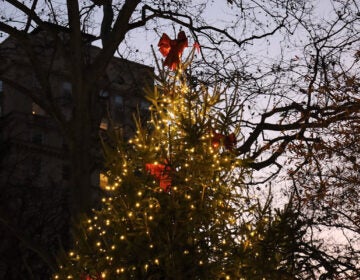Silk Road now has its mummies
Chinese mummies, which had been blocked by Chinese officials are recently as a week ago, are now on display at the University of Pennsylvania Museum of Archeology and Anthropology.
The traveling exhibition, “Secrets of the Silk Road,” traces ancient trade routes between Europe and the Far East, suggesting the world started getting smaller three thousand years ago. Recently unearthed artifacts show European influence on Chinese sculpture and textiles.
A 3800-year old mummy called the Beauty of Xiaohe (pronounced SHA-hoe), wearing a felt hat and wrapped in a woven wool brocade, rivals the gloden glimmer of King Tutankhamun.
“I personally find King Tut incredibly boring,” said Penn Museum director Ricahrd Hodges. “It doesn’t have historical meaning for me. Finding the Beauty of Xiaohe from the age of Stonehenge wearing the same clothes of individuals from Denmark: there’s a thought.”
The stunningly preserved mummy was found in a grave in Eastern Central China, wearing a hat at a jaunty angle. Chinese historian Victor Mair calls her the Marlene Dietrich of the Desert.
“When she was found the hat was over her right eye, which I thought was very sexy,” said Mair, thinking about the movie Blue Angel.
The mummy and other objects of the show, organized by the Bowers Museum in Santa Ana, California, were displayed in California and Texas without incident. Penn Museum is the only East Coast stop of the exhibition.
On opening day, neither Museum officials nor visiting Chinese dignitaries would explain why the objects were initially blocked in Philadelphia, only saying there was a “miscommunication.”
They are now on display thanks to a desperate trip to the Chinese embassy by Mair, begging to display the mummies, if only for three weeks. The exhibition was planned to run until June, and will be open without the mummies for three months..
Mair says he and a mid-level Chinese bureaucrat managed to convince Chinese cultural leaders to relent the objects for three weeks, but Mair says he is not done.
“I didn’t want to have any ruffles today–with the Chinese here and all,” said Mair on opening day. “There are some new Chinese dignitaries here for a few days. I’m already starting to write letters and make contacts.”
Mair says he hopes to be able to keep the mummies until at least March 19, when Penn will host an international symposium about East-West antiquity.
WHYY is your source for fact-based, in-depth journalism and information. As a nonprofit organization, we rely on financial support from readers like you. Please give today.




